
How to Use Li-ion 5000mah: Examples, Pinouts, and Specs
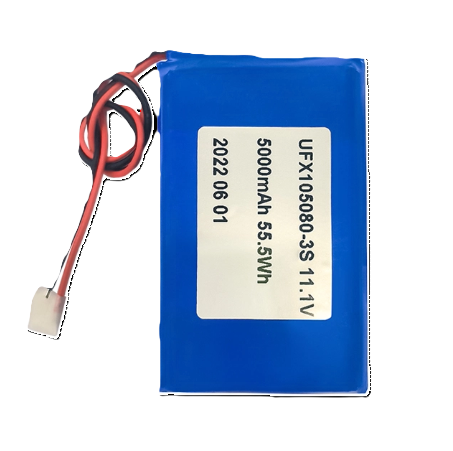
 Design with Li-ion 5000mah in Cirkit Designer
Design with Li-ion 5000mah in Cirkit DesignerIntroduction
The Li-ion 5000mAh battery is a rechargeable power source based on Lithium-ion technology, with a capacity of 5000 milliampere-hours (mAh). This high-capacity battery is designed to provide a reliable and long-lasting power supply for a wide range of electronic devices, including smartphones, laptops, portable power banks, and various DIY projects, including those involving Arduino UNO and other microcontrollers.
Explore Projects Built with Li-ion 5000mah
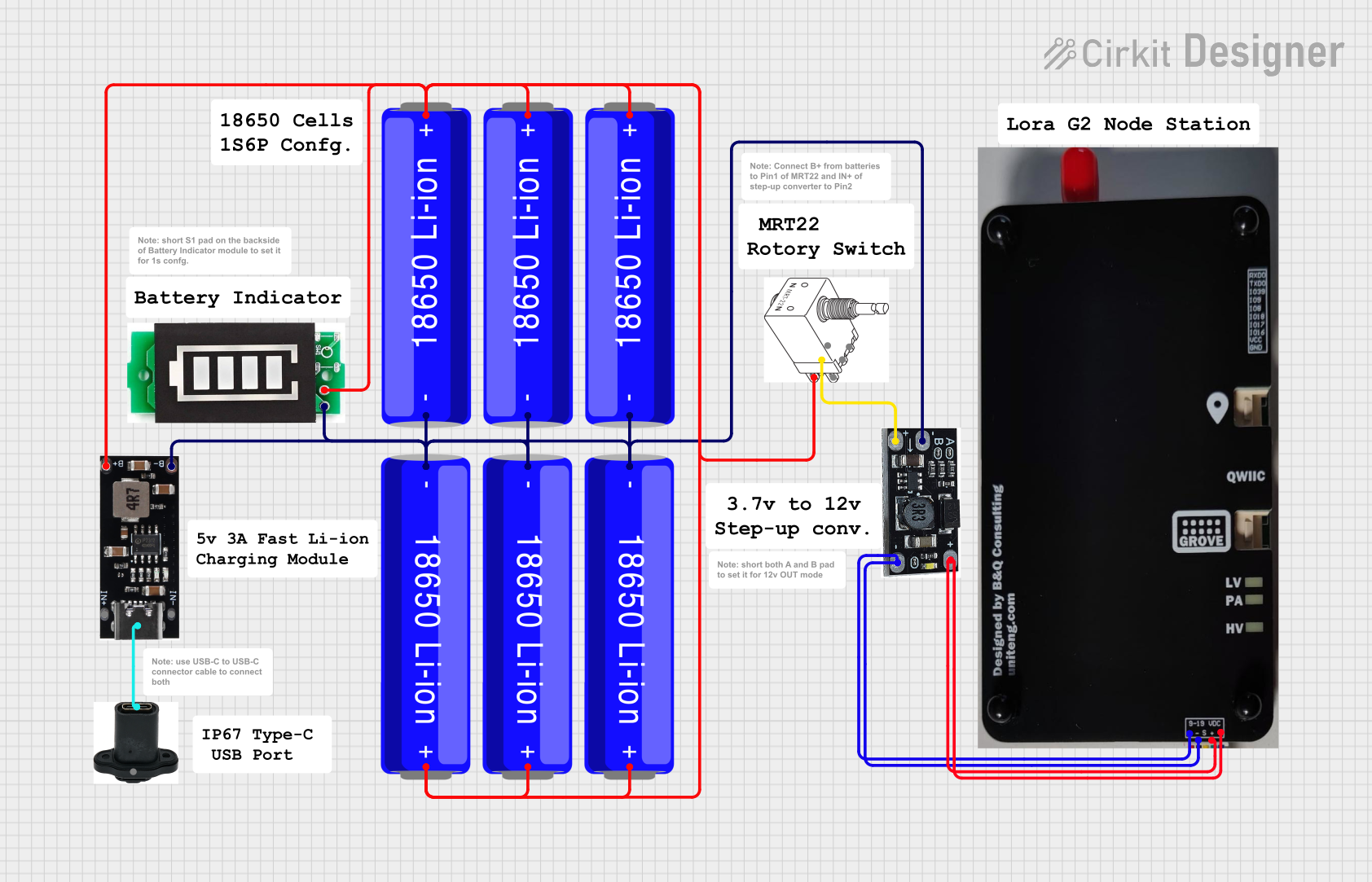
 Open Project in Cirkit Designer
Open Project in Cirkit Designer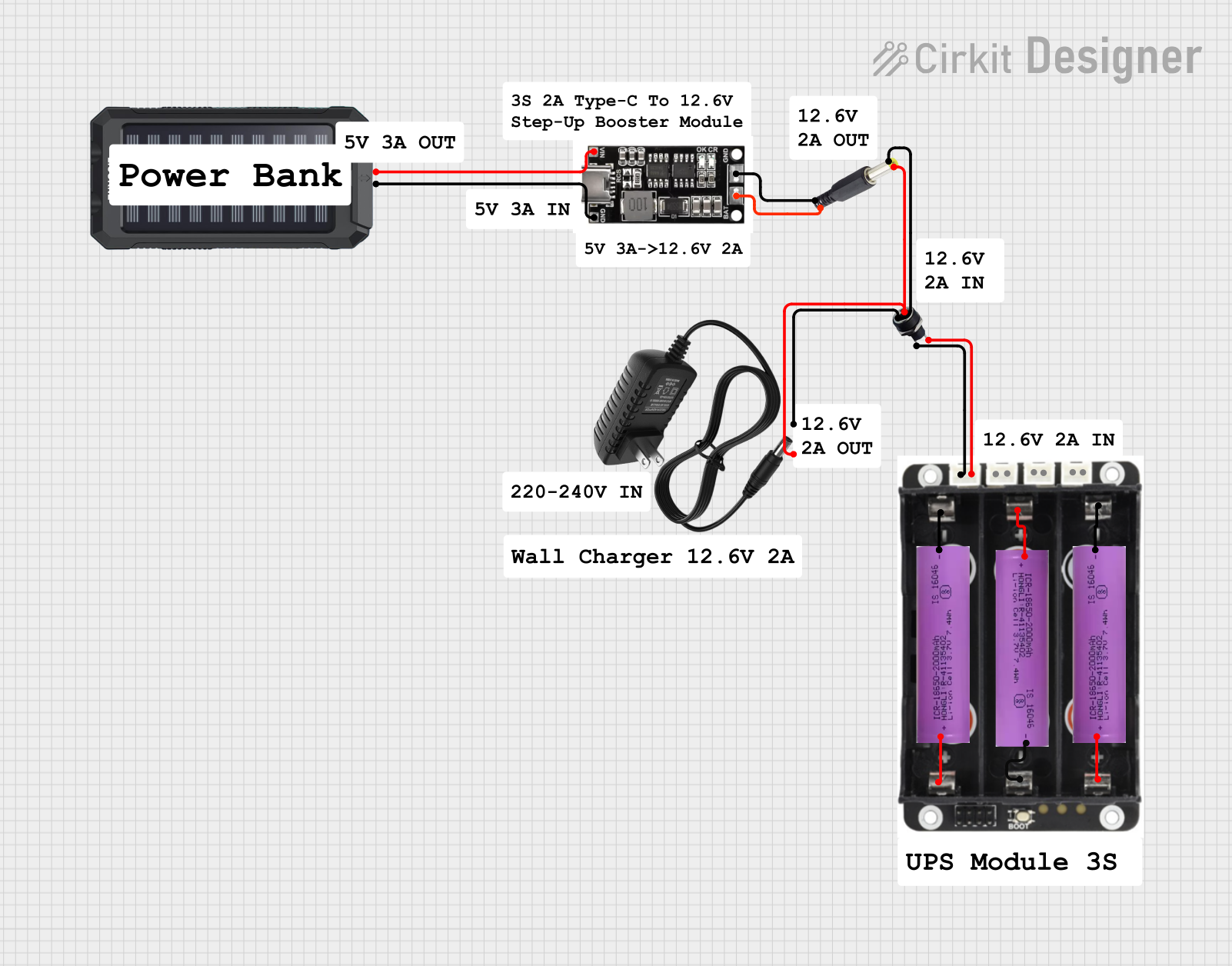
 Open Project in Cirkit Designer
Open Project in Cirkit Designer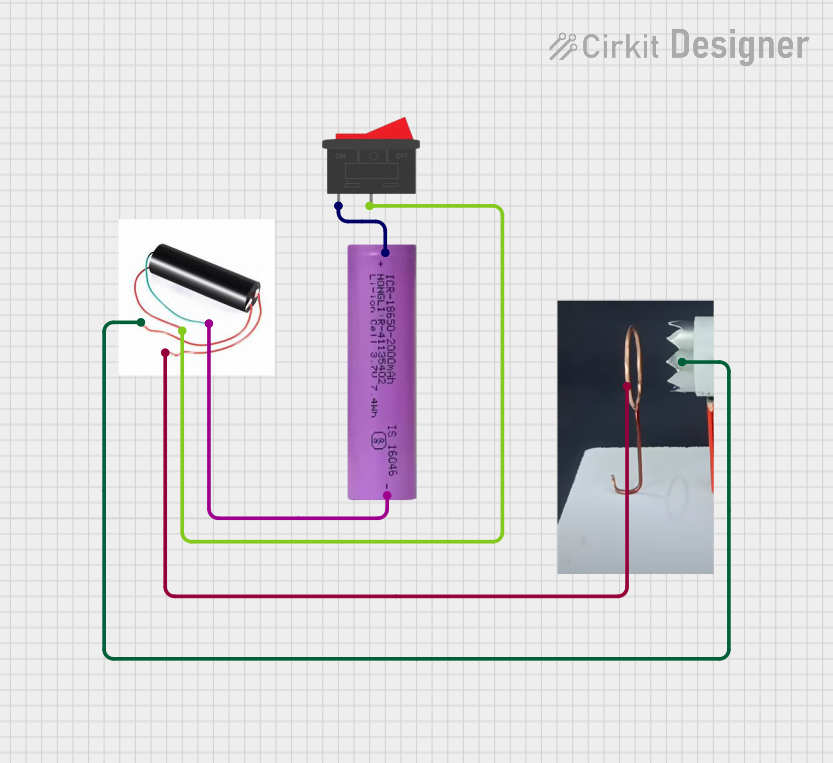
 Open Project in Cirkit Designer
Open Project in Cirkit Designer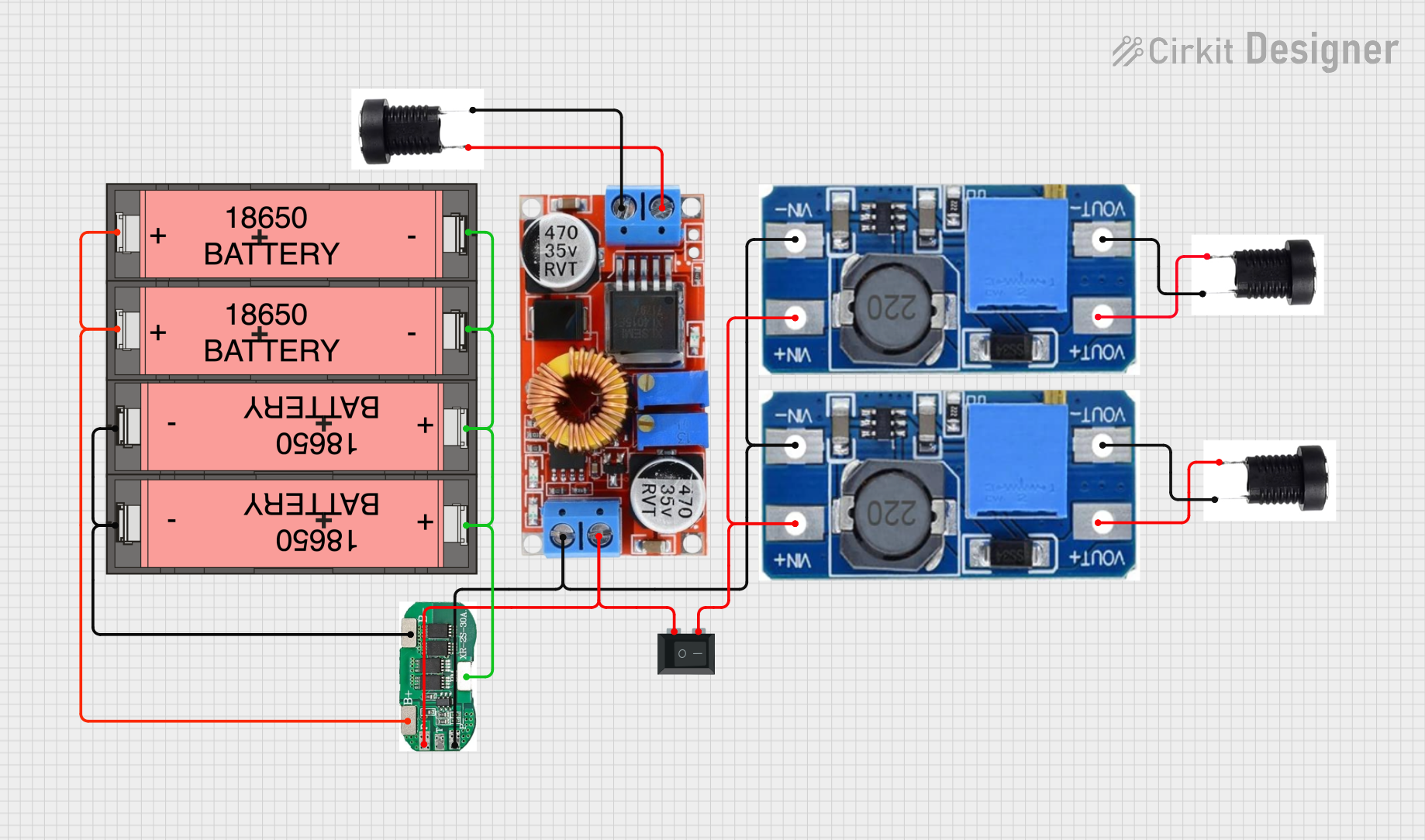
 Open Project in Cirkit Designer
Open Project in Cirkit DesignerExplore Projects Built with Li-ion 5000mah

 Open Project in Cirkit Designer
Open Project in Cirkit Designer
 Open Project in Cirkit Designer
Open Project in Cirkit Designer
 Open Project in Cirkit Designer
Open Project in Cirkit Designer
 Open Project in Cirkit Designer
Open Project in Cirkit DesignerTechnical Specifications
Key Technical Details
- Nominal Voltage: 3.7V
- Capacity: 5000mAh
- Maximum Charging Voltage: 4.2V
- Discharge Cut-off Voltage: 2.5V
- Standard Charge Current: 1A (1000mA)
- Maximum Charge Current: 2.5A (2500mA)
- Standard Discharge Current: 500mA
- Maximum Continuous Discharge Current: 1A (1000mA)
- Cycle Life: >500 cycles
- Operating Temperature:
- Charging: 0°C to 45°C
- Discharging: -20°C to 60°C
Pin Configuration and Descriptions
| Pin | Description |
|---|---|
| + | Positive terminal |
| - | Negative terminal |
Usage Instructions
Integrating with a Circuit
Charging the Battery:
- Use a dedicated Li-ion battery charger or charging circuit.
- Ensure the charger is set to the correct voltage (4.2V) and does not exceed the maximum charge current of 2.5A.
Discharging the Battery:
- Connect the positive terminal to the positive input of your device and the negative terminal to the ground.
- Do not exceed the maximum continuous discharge current of 1A to prevent overheating and potential damage.
Battery Protection:
- Always use a battery management system (BMS) to prevent overcharging, deep discharging, and short-circuiting.
Arduino UNO Connection:
- When powering an Arduino UNO, ensure that the input voltage is regulated to 5V using a step-up converter or voltage regulator.
Best Practices
- Avoid exposing the battery to high temperatures or direct sunlight.
- Do not puncture, crush, or disassemble the battery.
- Store the battery in a cool, dry place when not in use.
- Regularly check the battery voltage to prevent over-discharge.
Troubleshooting and FAQs
Common Issues and Solutions
- Battery won't charge:
- Check the charger and connections.
- Ensure the battery is not below its discharge cut-off voltage.
- Battery discharges quickly:
- Verify that the load does not exceed the recommended discharge rate.
- Check for any signs of battery damage or aging.
FAQs
Q: Can I charge the battery with a higher current to speed up the charging process?
- A: Charging the battery with a current higher than the maximum charge current can lead to overheating and reduce the battery's lifespan. Always follow the specified charging parameters.
Q: How do I know when the battery is fully charged?
- A: Use a charger with an indicator or monitor the voltage. The battery is fully charged when it reaches 4.2V.
Q: Is it safe to leave the battery charging overnight?
- A: It is generally safe if you are using a charger with overcharge protection. However, it is best practice to monitor the charging process.
Example Arduino UNO Code
Below is an example code snippet for monitoring the battery voltage using an Arduino UNO. This setup requires an appropriate voltage divider circuit to step down the battery voltage to a safe level for the Arduino's analog input.
// Define the analog pin connected to the voltage divider
const int batteryPin = A0;
void setup() {
Serial.begin(9600);
}
void loop() {
int sensorValue = analogRead(batteryPin); // Read the analog value
float voltage = sensorValue * (5.0 / 1023.0) * 2; // Convert to voltage
Serial.print("Battery Voltage: ");
Serial.println(voltage);
delay(1000); // Wait for 1 second before reading again
}
Note: The * 2 in the voltage calculation accounts for a voltage divider that halves the battery voltage. Adjust this factor based on your specific voltage divider ratio.
This documentation provides a comprehensive overview of the Li-ion 5000mAh battery, ensuring safe and effective usage for both beginners and experienced users. Always follow the manufacturer's guidelines and safety precautions when handling Li-ion batteries.